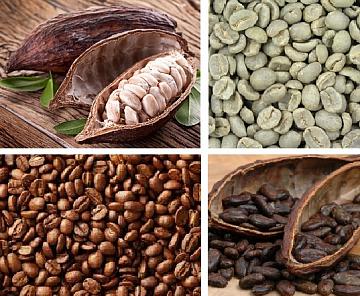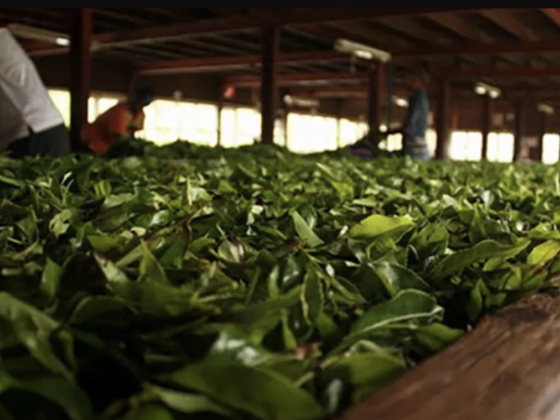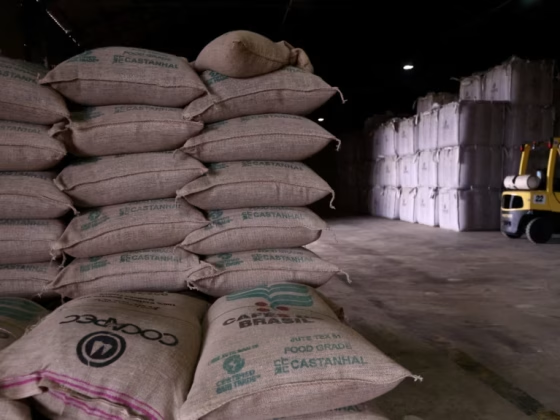Millions of dollars and a massive re-planting effort later, this Andean nation is showing signs of recovery just as its neighbors to the North are being slammed by the blight.
Analysts believe roya could hit 30 to 50 percent of the Central American and Mexican coffee crop over the next few years, and some aid agencies fear it could lead to hunger or even famine in a region where farmers live from harvest to harvest.
If Colombia’s fight with roya is any indication, Central America could have a long, expensive and rough road ahead.
The fungus creates orange spots on leaves and destroys the fruit, often during multiple seasons. As warmer and wetter weather has swept the region, roya has thrived, spreading to higher altitude coffee farms that used to be out of reach. While fungicides can help stop roya, most farmers eventually have to radically prune their trees, sacrificing harvests for years.
In the rolling hills of Colombia’s coffee country, Luis Alirio Rios was watching workers on his farm, El Descanso, come in with buckets full of red coffee berries.
“Just a few years ago this place was destroyed by roya,” he said. In 2012, his harvest dropped to 4,100 pounds per 2.5-acre plot, or 39 percent below usual, he said.
But this year is going to be different. As he pulled back the branch of a young Castillo coffee plant, it was loaded with pea-sized berries that should be ripe in a few months. Rios said he’s expecting a bumper crop.
The Castillo plant looks like an ordinary coffee plant, but it has been at the heart of the Colombian rebound.
Alvaro Gaitan, a scientist at Cenicafé, a research and development facility in Chinchiná run by the Colombian Coffee Growers Federation, recently led the way to a temperature-controlled room. Lined and labeled on shelves were hundreds of glass jars containing coffee varieties plucked from across the world, but particularly from Ethiopia, the birthplace of coffee.
Over the course of 13 years, Cenicafé scientists cross-bred some of the specimen with local varieties to produce the roya-resistant Castillo plant. Since 2011, the country has uprooted more than 1,200 square miles of coffee farms and replanted Castillo, at a cost of about $1.1 billion.
But Colombia’s super plant is virtually useless in Central America, said Gaitan. Coffee plants need to be bred and tailored to match local conditions, and Cenicafé has produced seven regional varieties of Castillo just to meet Colombian demand. Central American farms may be too wet or dry to support the plant, he said. And while Central America has a coffee plague called mycena citricolor, or gotera, for example, Colombia has never had the issue and Castillo’s genes haven’t been tweaked for it, Gaitan explained.
“Central America is going to face two or three years of pain unless they can find the right varieties,” he said.
But finding the variety is just part of the equation. In order to make sure there was an adequate supply of Castillo seeds (it takes 200 tons of seed to replant a 2.5 acre plot) the Coffee Federation had to establish a network of quality-controlled seed farms. It also has an army of 1,500 agricultural extension workers who not only help farmers with technical details but also getting the bank loans they needed.
Luis Fernando Samper, head of communications for the Coffee Federation, likes to compare the process to an “orchestra.”
“If you have the money, do you have the variety? If you have the variety, do you have the seeds? If you have the seeds, how do you get them to the farms?” he asks. “Everything has to work together.”
But some worry that Central America doesn’t have the orchestra needed to stop roya.
Christian Wolthers is the founder and chief executive of Wolthers America, a Fort Lauderdale importer that brings in coffee from Central America, Brazil and Colombia. Early this year he traveled to Guatemala to visit local producers. He said of the 90,000 coffee farms in the country, fewer than 1 percent are medium or large. Of the estimated 89,700 small farms, about 90 percent had been hit by roya, he said.
Wolthers is expecting Guatemala coffee production to fall 15-20 percent this year and up to 50 percent next year.
“In Guatemala only half the farms will get some technical support and expertise through their cooperative connection,” he said. “The other half are just praying. They think this is God-sent and that God will either show them the way or solve the problem.”
Other Central American nations might also suffer from lack of well-funded organizations that can marshal a unified response.
The coffee crisis may be devastating for farmers, but the effects on U.S. consumers will be more subtle. While there won’t be a coffee shortage, some of the high quality, aromatic flavors from the region could be in short supply, said Spencer Turer, director of coffee operations at Coffee Analysts, which specializes in coffee testing laboratory services.
“Globally speaking there is enough Arabica to meet demand,” he said. “But are the coffees that are used by the U.S. trade going to be available? That’s the big question, and the higher up the quality chain you go, the bigger the question mark becomes.”
Organic farms have been particularly hard hit by roya, he said.
For the moment, Colombia seems to be on the other side of the crisis. Coffee production in April was up 85 percent versus the same month last year, and during the first four months of the year, production was up 41 percent. Last month, Colombia said it had been the first country in the Americas to be able to declare four of its coffee-growing municipalities free of roya.
As he walked around El Descanso farm, Samper, of the Coffee Federation, said most consumers are unaware about all the work that goes into making a cup of coffee.
“You might see the coffee plant,” he said “But you don’t’ see everything that went into making the coffee plant.”
Source: miamiherald.com/2013/05/19/3405435/colombias-fight-against-coffee.html









